“Happiness is the Smell of Freshly, Baked Bread.”
Is there any other food item that has a longer history than the humble loaf of bread? Today’s modern bread, lining the shelves of numerous bakeries all over the world, has come a long way.
The humble loaf of bread has survived millions of wars, massive scientific revolutions and continues to be an integral part of our diets for millennia. Today, in this article, we salute this “Amazing Life-sustaining” dish and take a look at its evolution over the years.
In fact, bread and its different forms are the most widely consumed food materials in the world. Not only is it full of energy-giving carbohydrates, but it’s also compact, easy to store and above all portable. These are the reasons why bread has been an integral part of the human evolution for ages.
Let’s dive into a “Bready” history.
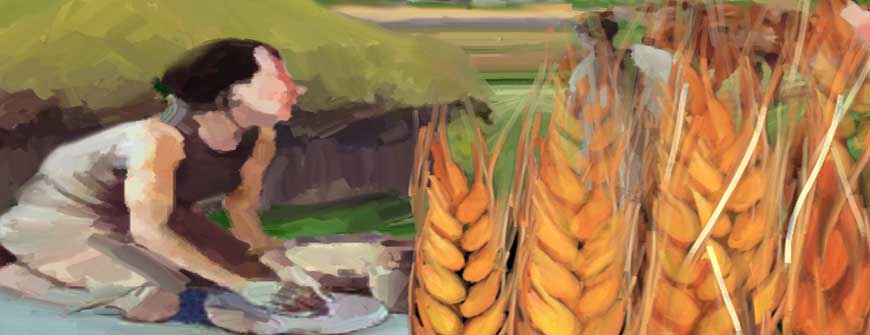
Bread: At the Beginning of Time
Recent studies indicate that our ancestors have been making bread since more than 30,000 years ago. Prehistoric man during his journey through the caves stumbled upon the secret of mixing grains and water to make gruel.
From there, it wasn’t long before he started cooking this gruel by frying it on stones. The grainy mixture when heated on rocks turned into a solid, which was the prehistoric ancestor of our modern loaves.
In fact, a recent study conducted by the National Academy of Sciences proves this point. It has found traces of starch on Neolithic pestles and mortars. Our Neolithic ancestors must have used dried roots of plants to create raw flour. This powder was then mixed with water and fried on hot rocks.
Voila! The first bread was born!

The Beginning of Modern Bread
But, how did we make the jump from these crude flatbreads to the fluffy, delicate loaves of today? The credit for the loaves of today goes to three modern, scientific inventions. By modern, we don’t mean the last few years. In fact, the loaves of bread we see today have been in existence for several centuries.
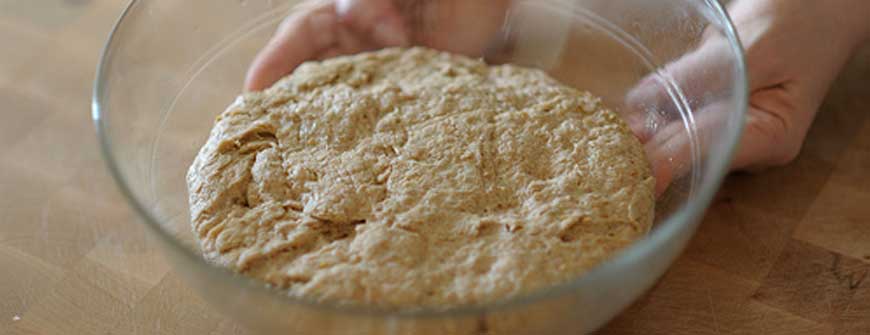
1. Leavening
This process is where the magic happens. It is what makes bread rise to form a fluffy, light loaf. Bread minus the leavening procedure is called as flatbreads.
The Indian Chappathis, Phulkas, Naans, the Middle-Eastern Pitas and the Mexican Tortillas are examples of flatbreads. They are the closest cousins of the pre historic bread of our cave-dwelling ancestors.

Enter the Magical Yeast
Yeast is the most commonly used leavening agent. These tiny microbes are always on the search for a nice, warm place to start a home. And what better place, than a fresh, warm bowl of flour and water?
The first leavened bread must have been an accident. Some unsuspecting baker must have left his starchy bowl of batter opened. A colony of passing yeasts must have built their home in the starchy mixture.
Yeast ingests the sugars present in the starchy gruel and expels carbon-di-oxide. This gas produces bubbles that make the batter rise in volume, thereby making it fluffy and light. When you bake this mixture, the bread rises in the oven to become fluffy and airy.
Leavening has been practiced for centuries, and in fact, the ancient Egyptians were skilled bread makers who even produced commercial yeast.
Fact Corner: The Ancient Egyptians were skilled breadmakers who made more than 50 different varieties of bread. In fact, you can find bread making scenes depicted on the inside of their tombs. They even paid bread as wages.
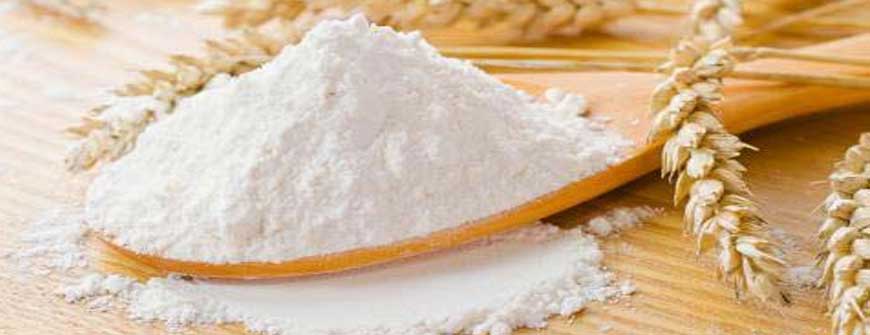
2. Refined Flour
There was one major drawback with early breads. They were hard. The reason? Our ancestors hadn’t invented refined flour yet.
The earliest bread used coarse grains that were ground on rocks by hand. This flour made loaves that were coarse and resembled our whole grain bread. Think of the European pumpernickel.
It was year 800BC, when the Mesopotamians, invented refined flour. They ground the grain between two flat stones placed on top of one another. Initially, the stones were moved by hand. Later, ancient humans used animals or slaves to grind the grain.
This started the process of “milling.” The ground flour made soft loaves of bread that soon gained immense popularity. Various civilisations began adopting this practice.
The search for the whitest, fluffiest loaf of bread further refined the milling process. With the invention of machines and the onset of the industrial age, flour was sifted to remove the germ and bran followed by bleaching.
The irony here is that today we’re looking to replace the white bread with healthier options.
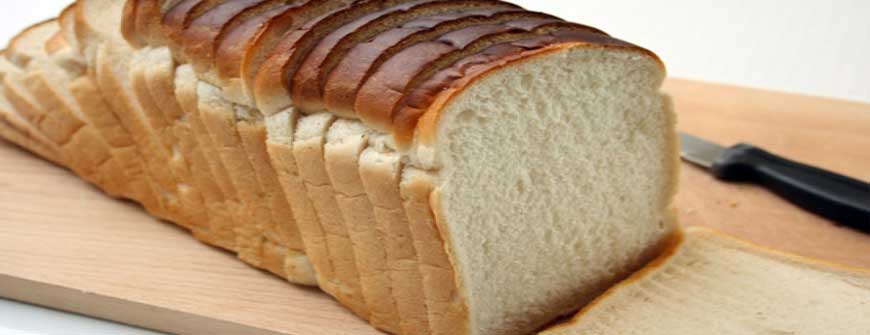
3. Sliced Bread
“Sliced Bread: The best invention known to mankind ever since the Wheel.”
The popularity of sliced bread is so high that there are hundreds of quotes dedicated to this modern day invention.
For centuries, bread was sold as whole loaves. You had to take it home and then cut it before serving to your family. Think Italian ciabatta and the French baguettes.
In fact, the early 20th century cookbooks had special columns on how to slice bread perfectly for sandwiches. For children and women, you had to cut the slices thin and remove the crusts. While for workers, it was okay to serve thick slices with the crusts on.
It was the year, 1917 when Otto Rohwedder, a jeweller created the first machine for slicing bread. However, you had to wait for nearly ten years before sliced bread hit the store. In 1928, his invention was mass-produced, and sliced breads became a reality for all households.

The 180° Reversal
Up until a few years back, the finest bread was white, sliced and ultra-fluffy. However, with increased awareness and expanding waistlines all over the world, people today have moved to other healthier options.
Brown bread, multi-grain loafs are increasingly preferred by more consumers.
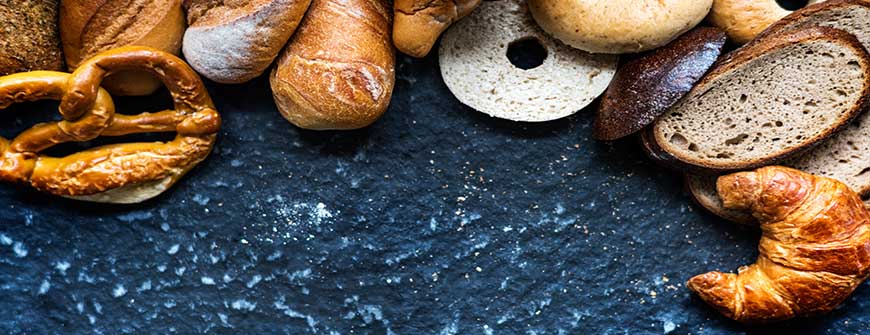
A few popular types of Bread from around the World
Did you know that more than 160+ varieties of bread made around the world? How many of them have you tried?
Here’s a list of the top well-known breads in the world.
- Baguette – Also known as French stick, this one is pretty popular. It’s an elongated loaf that is marked by slits at the top.
- Bagel – The bagel is instantly recognisable by its round, ring shape, and the chewy texture. The bagel traces its origins to the countries of Eastern Europe.
- Brioche – Another, popular bread from France, this one’s rich. It has high egg and butter content and is often used in several desserts.
- Chappathi – If you grew up in India, then we’re pretty sure that this one would have been a staple at your home. Lunch, dinner and sometimes even for breakfast, nothing can beat the soft textures and natural aromas of a chappati or roti. Served with curry, lentils a roti is not just yummy but also high on the nutritional value since it’s made with whole-flour atta.
- Ciabatta – This is an Italian invention. It’s an elongated loaf, that is flat and broad with a collapsed centre.
- Foccacia – Another Italian invention, the loaf is poked with a knife to prevent surface bubbling. It’s often served with a huge variety of toppings.
- Naan – From Pakistan and parts of Northern India, the naan is the ultimate comfort food. Roasted in a hot tandoor and served with chicken or mutton, this one’s an absolute delight.
- Pita – A Middle Eastern invention, it has a pocket in the middle that is filled with stuffings.
- Tiger Bread – A Norwegian invention, this has stripes that have earned its name.
- Tortilla – A Mexican invention, the tortilla today is famous throughout the world.
So, which is your favourite? Drop into GurgaonBakers to sample some of the best breads in town. Taste our fresh breads, made with the finest ingredients and fall in love with this humble dish all over again. We are available online at www.GurgaonBakers.com to serve you, also you can talk to us at +91 989-9988-185.
Images source – Internet

